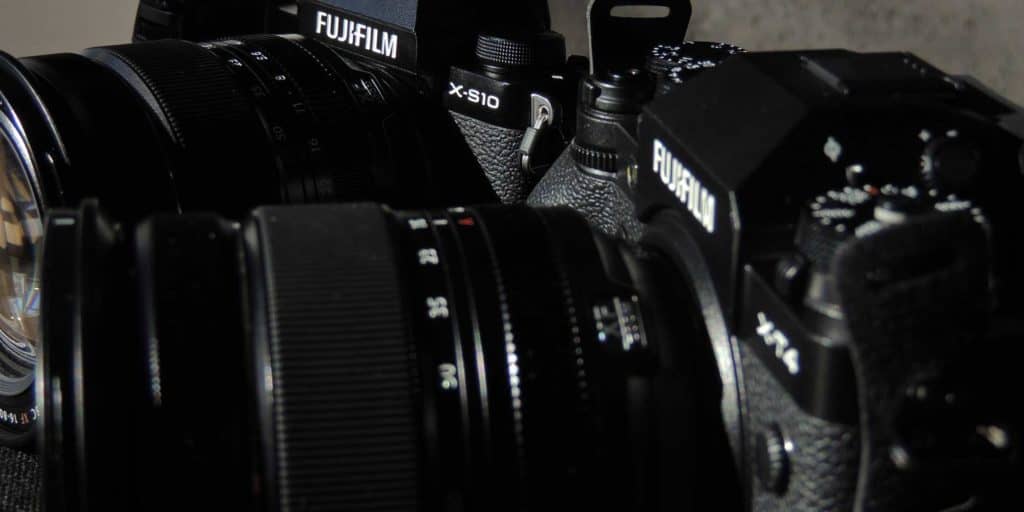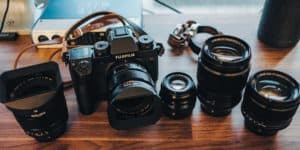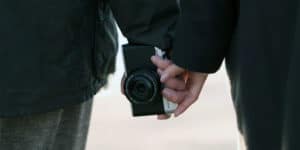Mirrorless cameras are more compact than DSLRs, giving traveling or street photographers a small camera that tucks away easily.
But different brands have created products designed to target specific niches of the photography market, and that’s very obvious when you compare the Fujifilm and Canon mirrorless offerings.
Fujifilm's Mirrorless Lineup
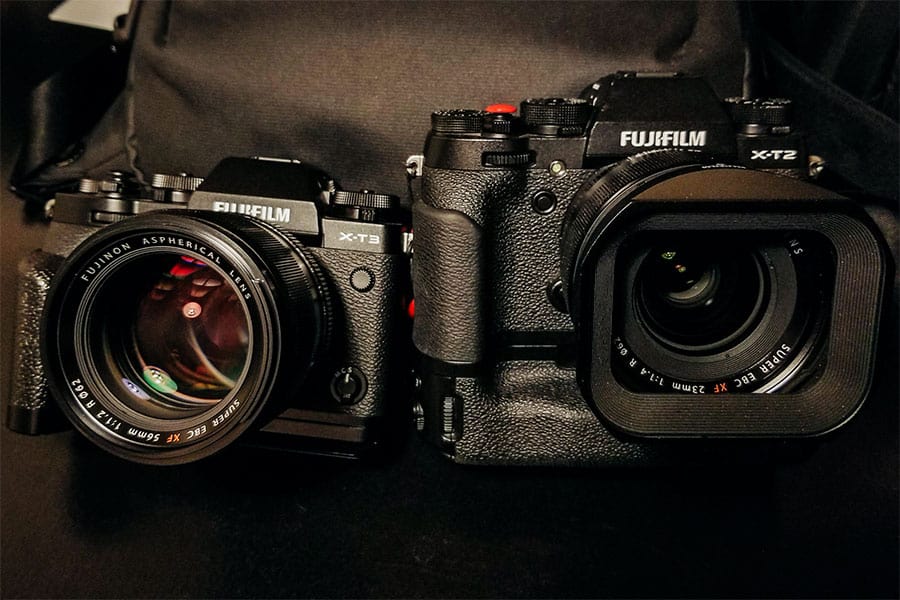
Fuji makes two mirrorless camera lines. The most commonly discussed is the X-mount system, which includes a wide range of SLR and rangefinder-style bodies and a complete set of lenses.
All of these bodies share similar APS-C sensors. Fuji has focused its efforts on getting excellent quality optics and image quality out of a premium APS-C camera.
Fuji’s other system, the professional GF-mount cameras, are medium-format mirrorless cameras with a limited lens selection.
Canon does not make any competitors to cameras with sensors this large. The cameras primarily compete with Hasselblad and Leica.
Canon's Mirrorless Camera Lineup
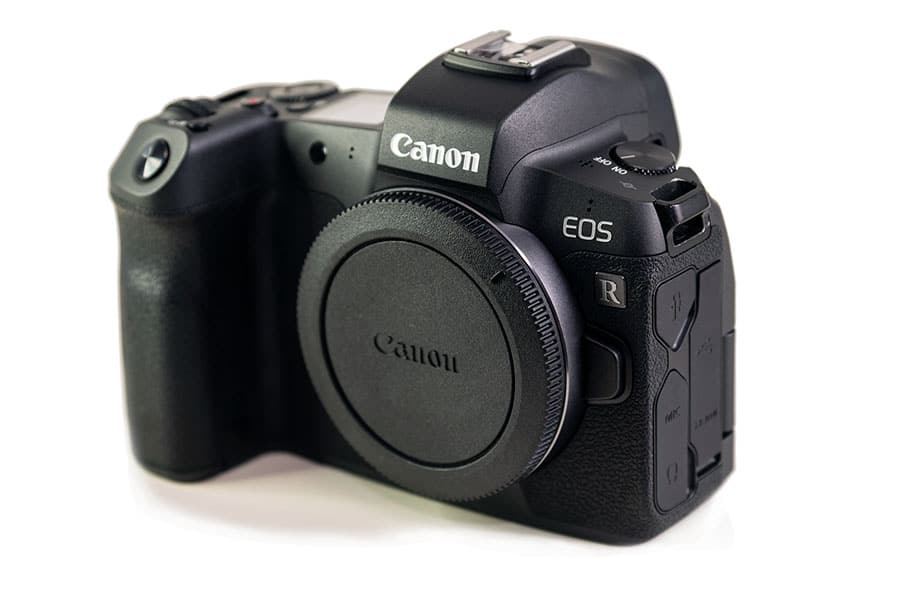
Canon has been making digital cameras for a long time, but nearly all of the ones you hear about are DSLR models that use the Canon EF-mount lenses.
In the DSLR, Canon still makes some of the best products out there and has one of the broadest lens lineups.
On the mirrorless side, Canon has been a bit of a late bloomer. Their first releases were the Canon M-mount cameras, which all shared APS-C sensors and smaller form factors.
Canon later added the EOS R camera bodies, which feature full-frame sensors and an entirely new RF lens mount.
In effect, Canon has created a consumer-grade lineup in the APS-C EOS Ms and a professional or “prosumer” line in the full-frame EOS Rs.
User Experience
If there is one single factor that sets these two camera makers apart, it can be simply described as the user experience.
The operation of any body between these two camera manufacturers is so wildly different as to make you feel like you are a time traveler.
You know from the first moment you pick up a Fujifilm body that it was designed to have a timeless, classic feel.
Except for the view screen on the back, Fuji cameras take you back to the reliable 35 mm film cameras of the 1970s. They come in classic styles, mimicking SLRs or rangefinder bodies.
And they lack any external LCD or push buttons–everything is manual, marked dials. The shutter release even still accepts the old-school screw-in remote triggers!
A simple example can show just how different this ethos is from the photographer’s standpoint.
Say you want to shoot your camera in fully manual mode, setting each element of the exposure triangle–the ISO, the shutter speed, and the aperture. On a Fujifilm body, there are physical dials for all of these things.
There is an aperture ring on the lens. Set the three dials as desired, then shoot.
Canon mirrorless cameras, on the other hand, are built for the digital age.
They are sleek and feature modern push buttons and programmable multi-selector dial controls that require confirming settings on the screen.
They’re good-looking cameras, but they are modern and closely resemble a DSLR of the past few years.
If you want to accomplish the same fully manual shooting on a Canon, you’ll have to work within the digital menu ecosystem.
You’ll need to set the camera to Manual mode and then use the multi-selector dials to dial in the shutter speed and aperture. The lens has no aperture ring, and ISO will have a push-button or menu access.
None of this is to say that Fuji bodies lack modern features, or that one way is better than the other.
Despite the design ethos, they are packed with the most state-of-the-art features, just like the Canons.
The question is more about the experience of using them. Fuji has created its design to appeal to creative photographers looking for a more physical connection to the camera.
Canon has focused on making the camera customizable with multi-functional dials.
Sensors and Image Quality Compared
For comparison’s sake, the Fujifilm X-mount system is most closely analogous to the Canon EOS M mirrorless cameras.
Fujifilm’s top-of-the-line X-mount camera is currently the X-T4, with a 26.1 MP CMOS sensor.
Among its many notable features, the X-T4 is the first Fuji camera to features in-body image stabilization (IBIS).
Canon’s best offering in the M-series is the M5, with a 24.2 MP CMOS APS-C sensor. Like Fuji, this camera has IBIS and a very quick autofocusing system.
Both systems look very similar on paper in terms of sensor output quality. The fundamental differences lie in their lens lineups and how each camera functions in hand.
Lens Lineup and Prices
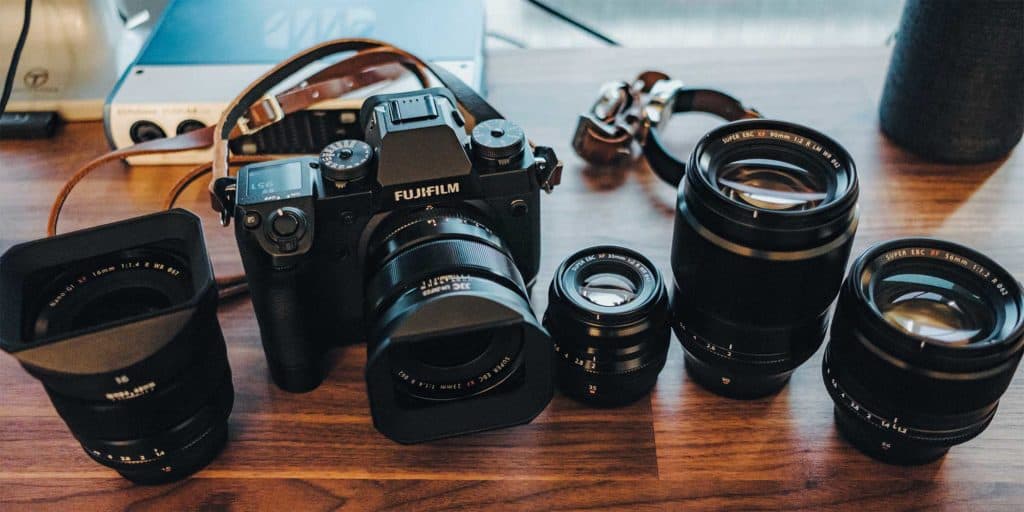
Beyond the usability of the Fujifilm cameras, the lens lineup is the final factor to base your decision.
Every camera maker makes some good lenses, some great lenses, and some less-than-stellar lenses.
Careful consideration needs to be taken when looking at the specific lens mount you want to use and which lenses you want to put on it. Which group will the lenses you most often use fall into?
If you’re a snob for image quality, Fuji is likely to provide you with a greater value. Canon optics are superb–so long as you pay for them.
The L-series lenses are often some of the best on the market, and they’re built tough for professional work.
You can only get these for the full-frame RF-mount cameras. The consumer-level, less expensive Canon lenses built for the EOS M usually rate a solid “so-so.”
Fujinon lenses, on the other hand, feature excellent optics throughout their lineup. Fuji does not make any discounted or “kit” lenses.
They tend to make all of their lenses to an overall higher standard.
It’s important to compare apples to apples, however. The Fuji X-mount camera system has smaller APS-C sensors, and therefore they can make smaller bodies and smaller lenses.
It is analogous to the Canon EOS M cameras. However, Canon markets this mirrorless system as an entry-level system and does not make any L-series lenses for it.
And Canon only currently makes eight different M-mount lenses–hardly a lineup that spoils you for choice.
To get L-series glass and professional features in a Canon mirrorless system, you must step up to the full-frame RF-mount mirrorless system.
That means the bodies and lenses all get bigger and heavier, and of course, more expensive.
As a result, there can be no real direct comparison between Fuji and Canon mirrorless lenses.
If we accept that the Fuji X-mount is equitable to the Canon M-mount, then the Fuji cameras and lenses will win every time.
Fuji currently makes over 30 X-mount lenses, and their collection is growing fast.
One final note regarding the Canon EOS M cameras–they make great backup cameras for photographers shooting with another EOS system.
Canon sells adapters that will connect EF or EF-S lenses to your EOS M body. That means that if you already have an extensive EF lens collection, the EOS M makes an inexpensive way to try out mirrorless technology.
Plus, you’ll have a compact travel camera that’s a ton of fun to use.
Sources
Conclusion
So, which mirrorless system is right for you? If you want the best resolution and access to a full-frame sensor, Canon’s RF system is the way to go.
If you value portability, an APS-C system will give you lighter-weight and smaller options.
And between the two, Fujifilm’s X-mount APS-C cameras offer far more lens options of better quality than the Canon M-mount does.

